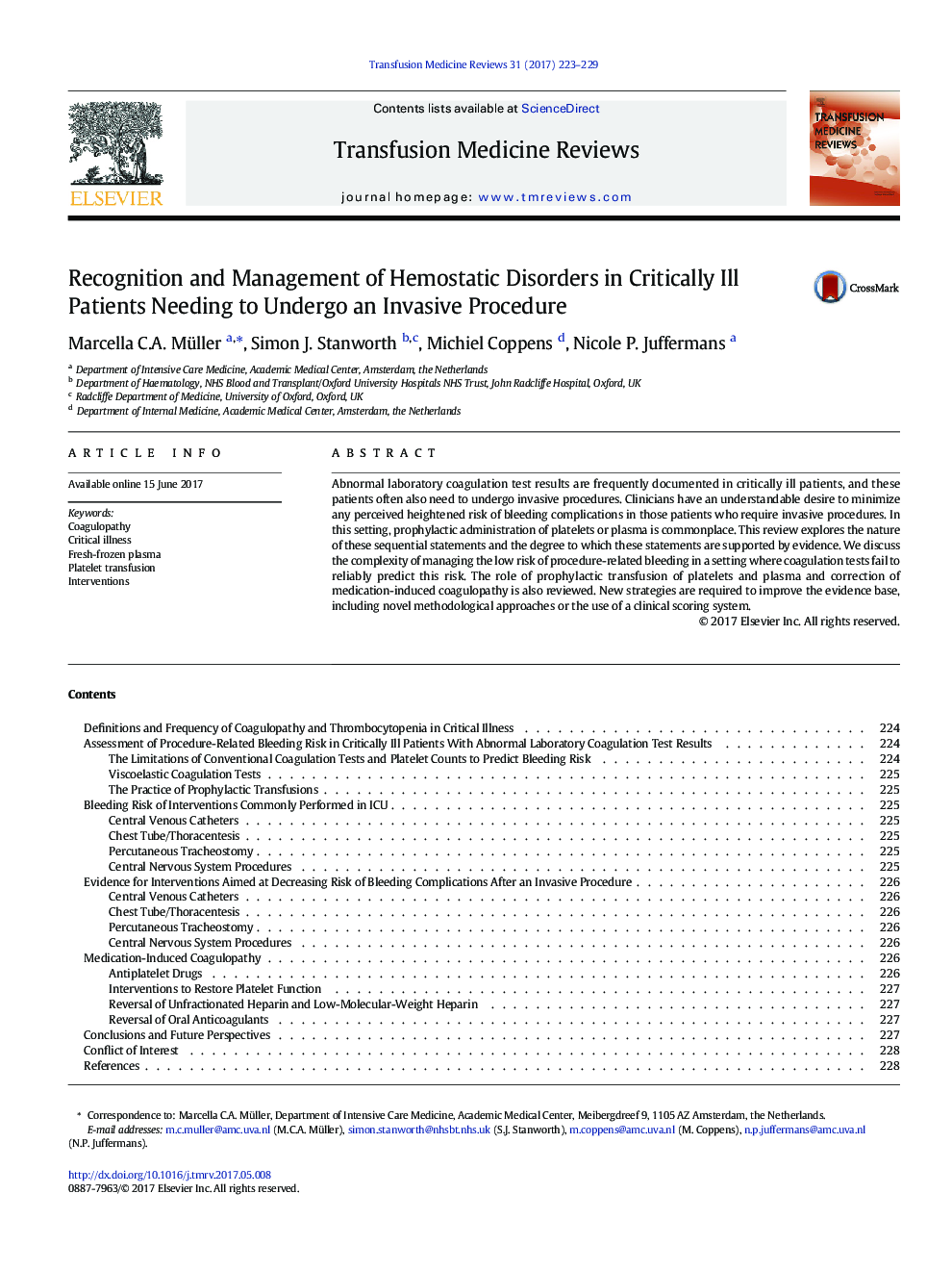| Article ID | Journal | Published Year | Pages | File Type |
|---|---|---|---|---|
| 5664768 | Transfusion Medicine Reviews | 2017 | 7 Pages |
â¢Coagulopathy in critically ill patients frequently triggers prophylactic transfusion before invasive procedures.â¢The risk of major bleeding after an invasive procedure is low and coagulation tests do not perform well in predicting this risk.â¢FFP is ineffective in lowering this bleeding risk. It is not known whether platelets reduce this bleeding risk.â¢Future challenges include the development of a clinical bleeding risk score to assess bleeding risk.
Abnormal laboratory coagulation test results are frequently documented in critically ill patients, and these patients often also need to undergo invasive procedures. Clinicians have an understandable desire to minimize any perceived heightened risk of bleeding complications in those patients who require invasive procedures. In this setting, prophylactic administration of platelets or plasma is commonplace. This review explores the nature of these sequential statements and the degree to which these statements are supported by evidence. We discuss the complexity of managing the low risk of procedure-related bleeding in a setting where coagulation tests fail to reliably predict this risk. The role of prophylactic transfusion of platelets and plasma and correction of medication-induced coagulopathy is also reviewed. New strategies are required to improve the evidence base, including novel methodological approaches or the use of a clinical scoring system.
